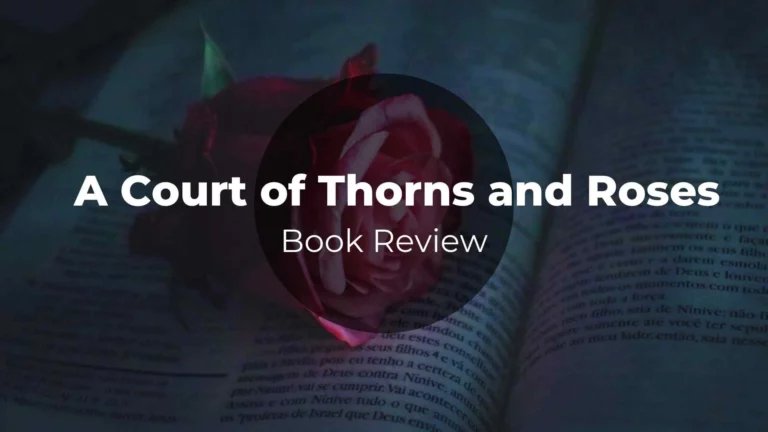Confess Colleen Hoover Summary & Review

- Author: Colleen Hoover
- Originally published: March 10, 2015
- Page Count: 320 pages, Paperback
- Genres: Romance, Contemporary, Fiction

In the realm of contemporary literature, few titles have ignited discussions and captured hearts as profoundly as “Confess” by Colleen Hoover. With its magnetic allure and a wave of critical acclaim, this novel has undeniably earned its place in the spotlight. Yet, as we dive into this review, I invite you to join me on a journey beyond the glimmer of hype and applause. Here, we’ll embark on an exploration that delves into both the celebrated aspects and the intricacies that lie beneath the surface. Buckle up, fellow readers, for we’re about to navigate the landscape of “Confess” with candid eyes, seeking to uncover the layers that make this book a cherished favorite for some and a subject of critical scrutiny for others. As we embark on this literary voyage, let’s embrace the diversity of opinions and honor the uniqueness that every reader brings to the table.
Confess Summary
At the heart of “Confess” lies an intricate tale of love, secrets, and the art of redemption. Set against the backdrop of a bustling city, the story introduces us to Auburn Reed, a young woman carrying the weight of a painful past, and Owen Gentry, an artist harboring his own enigmatic history. Their paths cross in an unexpected collision of fate when Auburn stumbles upon Owen’s confessional artworks, each revealing a private revelation that stirs the soul. The initial setup of their meeting is undeniably magnetic, drawing readers into a web of curiosity and anticipation.
However, as the narrative unfolds, it’s important to acknowledge that pacing occasionally faces its own labyrinth. While some scenes dance with an engrossing rhythm, others might linger in contemplation, leaving readers yearning for the next crescendo of emotion. Furthermore, as we’re invited into the lives of Auburn and Owen, a subtle sense of predictability can emerge, nudging at the edges of the plot’s twists. This predictability, while not always detrimental, can sometimes soften the element of surprise that adds zest to a story.
In the delicate balance between the beguiling setup and the occasional moments of pacing and predictability, “Confess” reveals itself as a canvas brushed with both brilliance and nuance. As we navigate the pages, let’s remember that even within its imperfections, there’s room for reflection and growth – a reflection that mirrors the very journey of its characters.
Character Development
Within the intricate tapestry of “Confess,” the evolution of its characters paints a portrait of vulnerability, strength, and the complexities of the human spirit. Auburn Reed, with her quiet determination and a past cloaked in shadows, embarks on a journey of self-discovery that resonates with many readers. As her layers unfold, we witness her transformation from a figure of caution to a beacon of resilience, reminding us that growth often emerges from the ashes of adversity.
Owen Gentry, the artist at the heart of the story, possesses a charisma that emanates from his enigmatic persona. His role as a confessional artist adds depth to his character, intertwining his artistic expression with his own unspoken secrets. Throughout the narrative, Owen’s growth reflects the fragility of unveiling one’s truths, while simultaneously drawing us into the enigma that shrouds his past.
Yet, as we traverse the pages, it’s important to recognize that even amidst their growth, some characters might occasionally tread on uneven ground. The canvas upon which these characters are painted sometimes reveals brushstrokes of inconsistency, causing their motivations to appear muddled or actions to lack coherence. These moments, while fleeting, do add a touch of imperfection to the otherwise captivating character arcs.
Amidst strengths and vulnerabilities, “Confess” offers a testament to the intricacies of human nature. Just as art is imbued with imperfections that define its authenticity, so too do these characters navigate their own imperfections, adding a layer of relatability to their journeys. Let’s embrace the opportunity to witness their evolution, appreciating the beauty that emerges from both their growth and the occasional shadows that remind us of their humanity.
Themes Explored
“Confess” by Colleen Hoover emerges as a tapestry woven with threads of love, secrets, and the pursuit of redemption – themes that resonate deeply within the human experience. The exploration of these themes stands as a testament to the universal nature of emotions, capturing the hearts of readers seeking connection and reflection.
The theme of love, presented in all its intricate forms, holds a mirror to the various shades of affection that color our lives. The intensity of first love, the ache of longing, and the transformative power of genuine connection are painted on the pages with vivid strokes. This portrayal allows readers to immerse themselves in the emotions that echo their own experiences, fostering a sense of camaraderie with the characters.
However, as we contemplate the themes, it’s worth acknowledging that the canvas of love and secrets has been painted across the literary landscape before. Some readers, well-versed in the genre, might perceive certain elements as familiar or bordering on clichéd. The journey of uncovering secrets and finding solace through companionship has graced the pages of many novels, creating a delicate balance between relatability and the potential for predictability.
In the tapestry of themes, “Confess” weaves both the comfort of familiarity and the allure of novelty. While some may resonate deeply with its exploration of love’s complexities, others might yearn for a more unique narrative palette. The beauty lies in the variety of perspectives that readers bring, allowing the themes to unfold differently for each individual, much like the layers of a confession itself.
Writing Style and Language
Colleen Hoover’s writing style in “Confess” wields a double-edged sword, seamlessly alternating between evocative prose and moments that might raise a reader’s brow. The emotional resonance she creates is undeniable – her words have the power to conjure a vivid spectrum of feelings, immersing readers in the heartaches and joys of the characters.
The strength of her style lies in her ability to craft scenes that leave an indelible imprint on the reader’s heart. Whether it’s a tender exchange between the protagonists or a poignant revelation, her words possess the finesse to evoke genuine emotions, sometimes even drawing a tear or a chuckle. These moments of emotional authenticity serve as the cornerstone of what makes “Confess” a captivating read.
However, it’s important to acknowledge that even the most skilled artisans might occasionally overreach in their pursuit of crafting the perfect narrative. At times, the prose might venture into overwrought territory, where a surplus of metaphors or similes could potentially distract from the scene’s essence. Similarly, instances of awkward phrasing might momentarily break the rhythm of immersion, prompting readers to pause and retrace a sentence.
Amidst these occasional hiccups, Hoover’s writing remains a compelling force, shaping the contours of the story with the power of her words. Just as an artist refines their strokes over time, so too does Hoover’s style continue to evolve, capturing the highs and addressing the nuanced lows of her narrative canvas. As readers, let’s cherish the moments of pure connection her writing fosters, while appreciating the journey of refinement that continues to unfold.
Emotional Impact
As I delved into the pages of “Confess,” a whirlwind of emotions swept over me, sometimes gentle and poignant, while at other times slightly turbulent. The story possesses an undeniable ability to draw readers into its emotional vortex, enveloping us in the characters’ joys and sorrows.
Certain scenes resonated with a profound resonance, stirring a genuine ache in my chest as I navigated the intricate web of feelings that unfolded. Moments of vulnerability were crafted with a delicate touch, leaving an indelible mark on my own emotional landscape. The love, pain, and secrets that pervade the narrative are palpable, offering an emotional intensity that can’t be ignored.
However, as I became immersed in the journey, there were instances where the emotional impact seemed to tiptoe on the edge of being contrived. Moments that could have soared with authenticity occasionally bore the subtle traces of being scripted, leading to a fleeting sense of detachment. It’s within these moments that the thin line between emotional resonance and manufactured sentiment becomes apparent.
Yet, it’s precisely this mixture of highs and challenges that mirrors the complexity of human emotions. Just as we navigate both the profound and the ordinary in our lives, so too does “Confess” traverse the spectrum of emotions. And despite occasional reservations, the emotional journey is undeniably memorable, provoking introspection and connection.
In the realm of feelings, “Confess” leaves its mark, sometimes with a gentle touch, and other times with a more nuanced imprint. Its ability to evoke genuine emotion stands as a testament to the power of storytelling, even as it encourages us to embrace both the moments of pure connection and those that might carry a touch of uncertainty.
Criticism & Room for Improvement
“Confess,” while undeniably captivating, also offers room for constructive evaluation in certain facets. One notable area that might garner criticism lies in the pacing of the plot. At times, the story’s rhythm seems to waver, leading to moments where the narrative lingers more than it propels. These instances of pacing unevenness can occasionally disrupt the immersive experience, leaving readers momentarily detached from the characters’ journey.
Another aspect that might have encountered scrutiny lies in the potential predictability of the plot twists. While the element of surprise is a hallmark of engaging storytelling, “Confess” occasionally leans into familiar narrative arcs that keen readers might anticipate. This predictability, though not pervasive, could diminish the thrill for those who thrive on unexpected revelations.
Additionally, while the characters undergo commendable development, some might argue that a few secondary characters remain on the periphery, lacking the depth required to resonate as strongly as the protagonists. This could potentially hinder the story’s ability to fully flesh out its supporting cast, potentially leaving readers yearning for a more comprehensive exploration of their motivations and roles within the narrative.
These critiques, however, do not overshadow the strengths of the book. Rather, they contribute to the layered discourse that accompanies any work of literature. Just as a canvas bears both masterful strokes and the occasional smudge, “Confess” showcases its own imperfections, inviting readers to engage in thoughtful conversations about the delicate balance between its strengths and areas for refinement.
Conclusion
In the realm of “Confess” by Colleen Hoover, we find a tapestry woven with emotional threads, inviting readers to traverse a landscape of love, secrets, and redemption. The novel’s ability to evoke genuine feelings is its crowning glory, painting characters in hues of vulnerability and strength. However, it’s important to note that, like any work of art, it bears its own imperfections. Pacing might occasionally falter, and certain plot twists could lean towards predictability. Yet, these critiques do not overshadow the allure of its themes or the impact of its characters’ growth. “Confess” holds an undeniable appeal for those who seek emotional resonance, even as it acknowledges that its canvas might not resonate with every reader’s palette. It’s within the rich interplay of its strengths and weaknesses that the true essence of this novel emerges, fostering a dialogue that’s as diverse as the confessions it paints.
About the Author

Colleen Hoover is an acclaimed American author known for her captivating storytelling and emotionally charged novels. Born on December 11, 1979, in Sulphur Springs, Texas, Hoover’s passion for writing began at a young age. After working as a social worker and a teacher, she followed her dream of becoming a full-time writer. With numerous bestselling novels under her belt, including ‘Confess,’ Colleen Hoover continues to enchant readers with her powerful storytelling and unforgettable tales of love, friendship, and personal growth.







